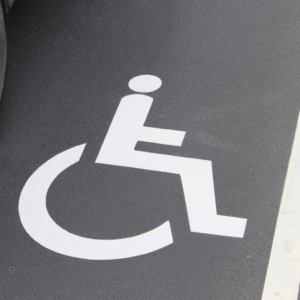Handicap accessible vehicles, also known as wheelchair accessible vehicles (WAVs), are specially modified automobiles that allow individuals with disabilities to travel comfortably and safely. These vehicles are equipped with adaptations and features that accommodate individuals using wheelchairs or other mobility aids. They play a crucial role in promoting independence, mobility, and inclusion for people with disabilities.
Understanding the Need for Handicap Accessible Vehicles
According to the World Health Organization (WHO), over one billion people globally experience some form of disability. For these individuals, transportation can be a significant challenge, limiting their ability to access education, employment, healthcare, and social activities. Handicap accessible vehicles address this need by providing a safe and convenient means of transportation for people with disabilities.
Types of Handicap Accessible Vehicles
Handicap accessible vehicles come in various forms, each catering to different needs and preferences. Modified cars and vans are commonly used and offer wheelchair accessibility through ramps, lifts, or modified entryways. Wheelchair accessible vehicles (WAVs) are specifically designed to accommodate individuals using wheelchairs, providing ample space, ramps, and securement systems. Additionally, adaptive driving controls allow individuals with limited mobility to operate vehicles safely.

Features and Adaptations in Handicap Accessible Vehicles
Handicap accessible vehicles incorporate numerous features and adaptations to enhance accessibility and safety. Wheelchair ramps and lifts provide easy entry and exit for wheelchair users. Lowered floors and raised roofs ensure sufficient headroom and interior space for comfortable mobility. Securement systems and tie-downs securely anchor wheelchairs in place during transit. Adaptive driving aids and controls enable individuals with limited mobility to operate vehicles effectively.
Benefits of Handicap Accessible Vehicles
The availability of handicap accessible vehicles brings forth numerous benefits for individuals with disabilities. Firstly, these vehicles offer a sense of independence and freedom by enabling individuals to travel without relying on others. Secondly, they contribute to an improved quality of life by facilitating access to employment, education, social events, and healthcare services. Lastly, handicap-accessible vehicles promote increased participation and opportunities for individuals with disabilities, breaking down barriers to inclusion.
Considerations when Choosing a Handicap Accessible Vehicle
When selecting a handicap accessible vehicle, several factors should be taken into account. Individual needs and preferences play a crucial role in determining the most suitable vehicle type and adaptations. Safety features and certifications are essential for ensuring the well-being of passengers. Additionally, understanding the maintenance and service requirements of the vehicle is vital for its long-term usability and reliability.
Financing and Insurance for Handicap Accessible Vehicles
Handicap accessible vehicles can be a significant investment, and financing options are available to assist individuals in acquiring these vehicles. Government assistance programs, grants, and loans specifically tailored for people with disabilities can help alleviate financial burdens. Furthermore, it is essential to consider insurance coverage and policy specifics to protect the vehicle, passengers, and other motorists.
Rental and Transportation Services for Handicap Accessible Vehicles
In situations where purchasing a handicap accessible vehicle may not be feasible, rental services offer short-term solutions. Many companies provide accessible vehicle rentals, ensuring individuals have access to transportation when needed. Additionally, the rise of ridesharing services has increased accessibility for people with disabilities, with some platforms offering options specifically designed for their needs.
Advancements and Future of Handicap Accessible Vehicles
As technology continues to evolve, the future of handicap accessible vehicles holds promising advancements. Innovations such as automated ramps and securement systems aim to further simplify the process of entering and exiting the vehicle. The integration of autonomous driving technology may enable individuals with disabilities to travel independently, without the need for a driver. These advancements are paving the way for a more inclusive and accessible future.
Conclusion
Handicap accessible vehicles play a vital role in promoting inclusivity and accessibility for individuals with disabilities. By understanding the need for these vehicles, exploring various types, considering important features, and being aware of financing options, individuals with disabilities can enjoy increased independence, mobility, and opportunities. The future of handicap accessible vehicles holds even greater promise, with advancements and innovations aimed at further enhancing accessibility and inclusivity.

